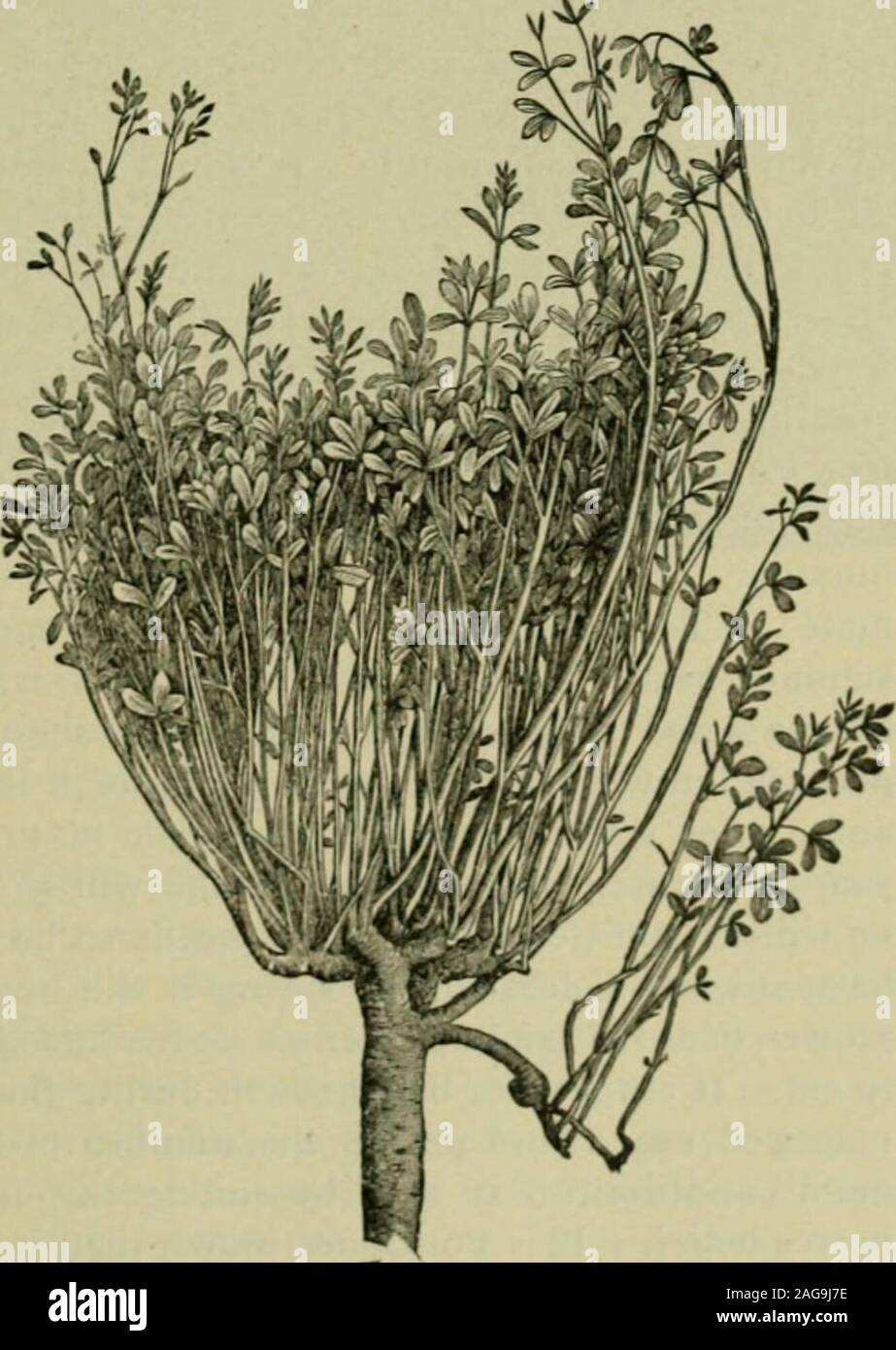. Grasses and forage plants, by J.B. Killebrew. rn Asia it v/as introduced into Greece at the time of the PersianWar, 470 years B. C. It was cultivated extensively by the Romans, wascarried into France probably when Caesar invaded Gaul, and then intoSpain. From Spain it came to Mexico and then to South America, andfrom South America to California. It was introduced into New Yorkbefore it was brought toCalifornia. Alfalfa is now cultivatedto some extent in everyState and Territory in the ^ /Union, and in every State ^^^^and Territory it has met ?/K- with more or less suc-cess. Wherever it has

Image details
Contributor:
The Reading Room / Alamy Stock PhotoImage ID:
2AG9J7EFile size:
7.1 MB (290.5 KB Compressed download)Releases:
Model - no | Property - noDo I need a release?Dimensions:
1332 x 1876 px | 22.6 x 31.8 cm | 8.9 x 12.5 inches | 150dpiMore information:
This image is a public domain image, which means either that copyright has expired in the image or the copyright holder has waived their copyright. Alamy charges you a fee for access to the high resolution copy of the image.
This image could have imperfections as it’s either historical or reportage.
. Grasses and forage plants, by J.B. Killebrew. rn Asia it v/as introduced into Greece at the time of the PersianWar, 470 years B. C. It was cultivated extensively by the Romans, wascarried into France probably when Caesar invaded Gaul, and then intoSpain. From Spain it came to Mexico and then to South America, andfrom South America to California. It was introduced into New Yorkbefore it was brought toCalifornia. Alfalfa is now cultivatedto some extent in everyState and Territory in the ^ /Union, and in every State ^^^^and Territory it has met ?/K- with more or less suc-cess. Wherever it has beenwell established it has re-ceived great favor. It is achild of the sun and revelsin heat that would destroyany other species of clover.Its nutritive elements arealmost identical with thoseof red clover. It has oneadvantage, however, of redclover, in that it is a peren-nial plant. It does not at allresemble clover in its ap-pearance. The purple pea-like flowers are in long, loose clusters or racemes, and are scattered over theentire plant.. Alfalfa -Medicago saliva. (U.S. Dept. of Agric.) 92 SOILS ADAPTED TO ITS GROWTH—Alfalfa does not growwell on any soil that has a hard pan or on thin soils. It is a deep rootedplant and must have a deep soil. Wherever the roots find a permeablesoil they will descend to a great depth and on river banks they have beentraced to the depth of 60 or 70 feet. On the rich sandy soils of the Southit is invaluable, and will grow luxuriantly and make enormous yields ofhay. Underlying rocks or impervious subsoils, or sour, marshy soils, orcrawfifhv soils, or stiff, clayey soils are fat.il lo its growth. So is stagnantwater. It will grow on favorable soils at almost any height from sealevel up to an elevation of 7000 feet. Alfalfa is not affected so much by altitude as by the depth andwarmth of the soil and the depth of the water-table beneath the surface.A rich, sandy loam, limy with a porous subsoil suits it best. A region inwhich the rainfall is ex